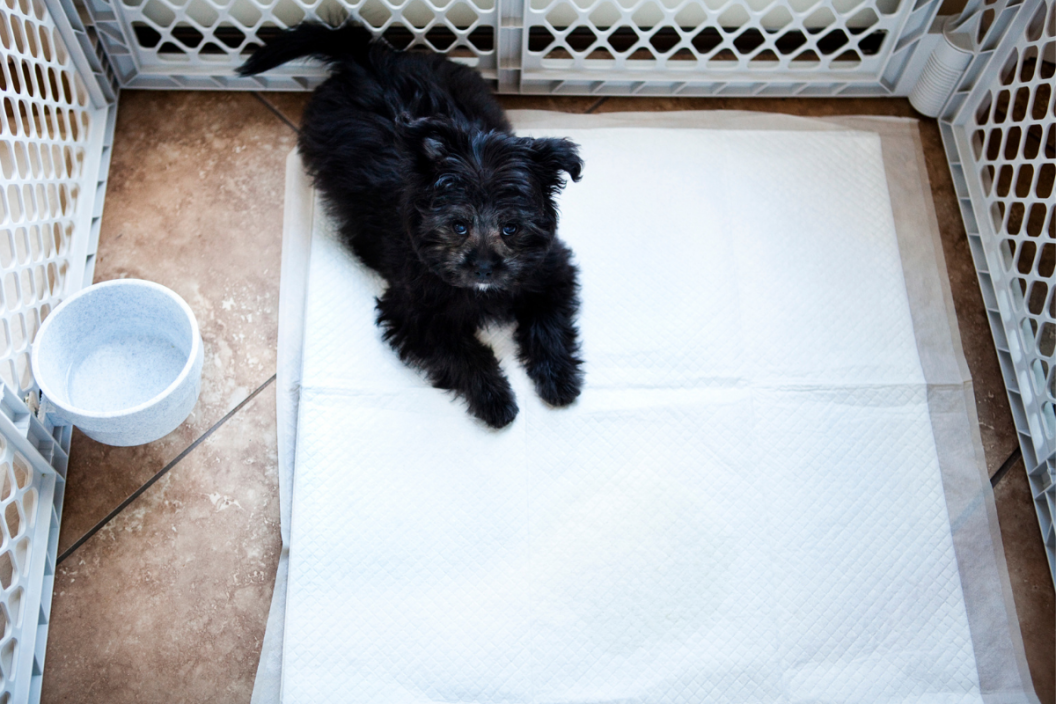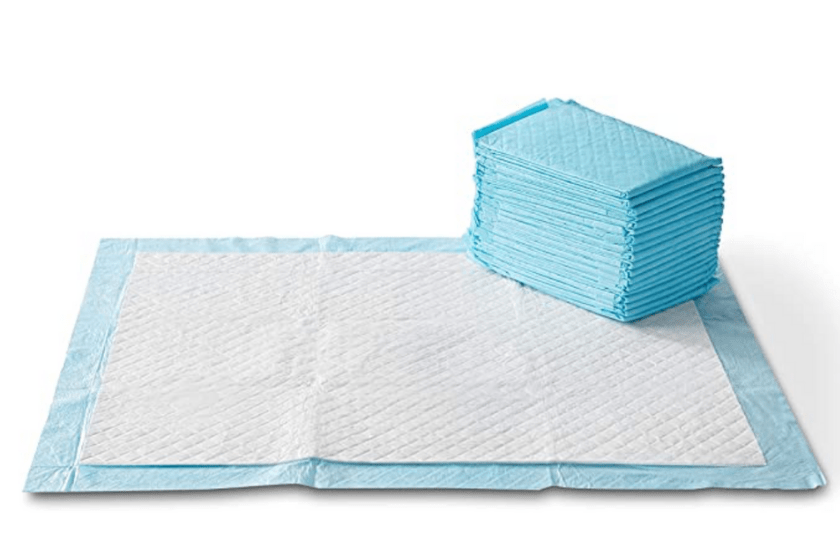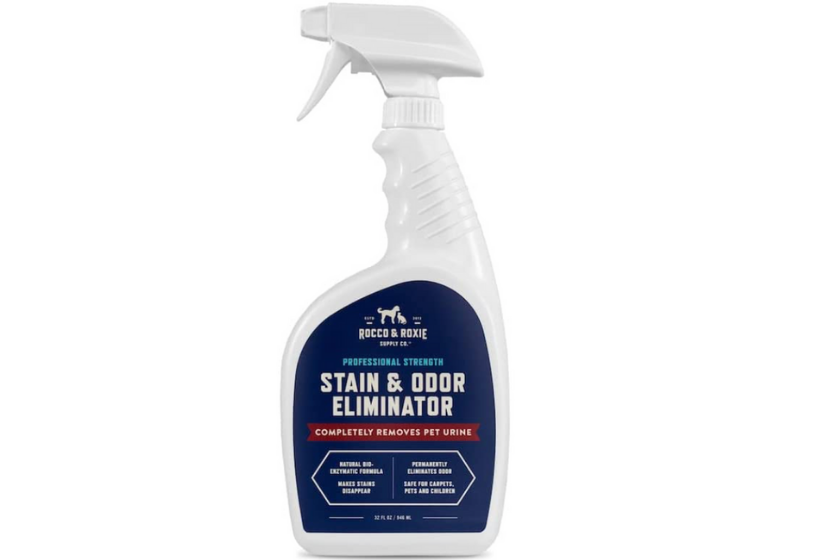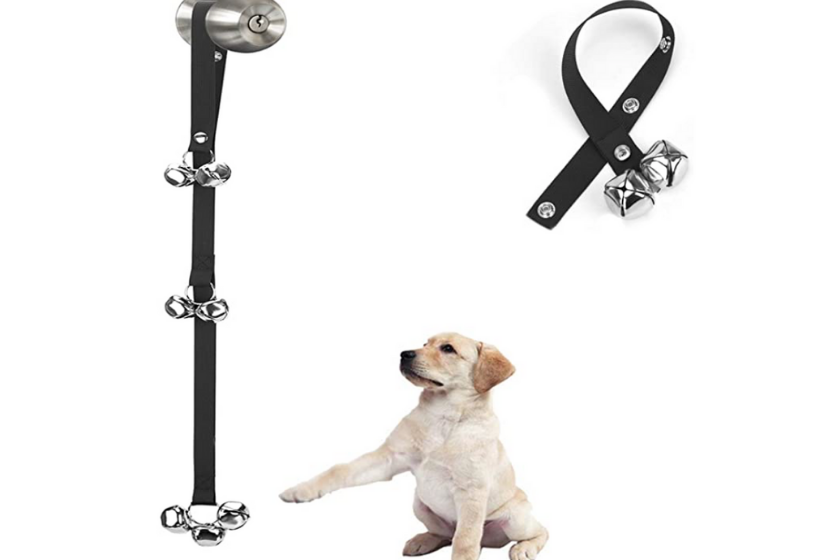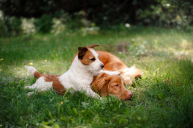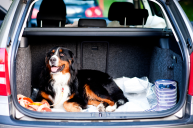Paper training, crate training, and frequent trips outdoors are the three methods used by most pet owners. Which works best?
Wouldn't it be nice if puppies came home potty trained? Unfortunately, for us dog owners, that is not the case. They need lots of dog training, from sleeping in a crate to walking on a leash. Of course, one of the more unpleasant training activities is the most necessary—puppy potty training. The last thing you want to do is clean up the puppy's potty and poop all day long, so setting a feeding schedule is the first step to successful potty training. Our puppy's schedule revolves around his feeding schedule. After he eats, we wait about 20 minutes, take him out to go potty, and again about an hour later. Most of the time, it is successful. Sometimes he doesn't have to go yet, so we have to watch for signs he needs to go. When we miss it, it usually ends with him pottying on the living room floor and me on my hands and knees with paper towels and a pet stain remover trying to get the potty all out. I pull out the carpet cleaner most of the time to ensure I get it all!
Keep in mind that puppies cannot go long hours without relieving themselves. They last for about an hour for every month they are. For example, if your puppy is three months old, they can hold their bladder for about 3 hours. As they get older, they will be able to last for longer stretches. Getting your puppy on a routine during house training will set him up for success! Here are some of our best tips to potty train a puppy.
How to Housebreak a Puppy
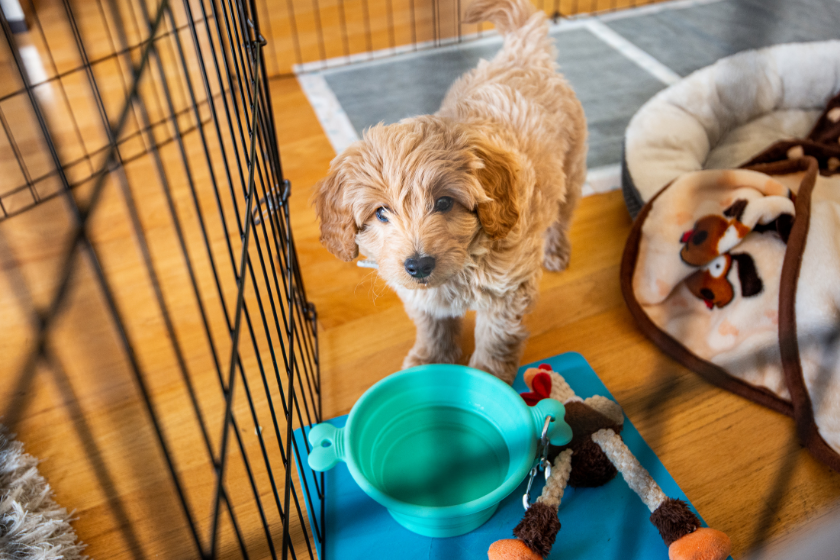 Potty training takes time and patience. There are a couple of different methods for potty training your puppy. Pad training, crate training, and constant outdoor trips are more popular methods. Either way, your new pet will need to go after the following times:
Potty training takes time and patience. There are a couple of different methods for potty training your puppy. Pad training, crate training, and constant outdoor trips are more popular methods. Either way, your new pet will need to go after the following times:
- Right after meals
- After training sessions
- Immediately after waking
- After vigorous play
- During or after a stressful event (first car ride may apply here)
- When overly excited
According to the American Kennel Club, using a crate is a very helpful potty training tool that helps you in the long run. Most will not go in the dog crate since they do not like to poop where they sleep. Pee pads are an excellent temporary solution to help with the transition. But, in the long run, the best way to potty train your pup is to watch them for signs that they need to go constantly. Sometimes it is very obvious, and other times the signs are very subtle. Most of our pup's accidents have happened when he plays and gets distracted. He suddenly stops what he is doing and goes to the floor. Playtime accidents are bound to happen while your pup is young, but it's important to distinguish between play and potty time to stop them.
While getting your puppy settled in their new home, make sure they are making frequent trips outdoors. The list above makes it seem like these trips outdoors are every few hours, and they are! At night you will need to get out of bed multiple times - set your alarm! Or if your puppy is vocal like ours, they will start whining in their crate to let you know it's time to go out!
Positive reinforcement is key when training dogs. The first time your puppy goes potty in their "spot," give them a treat. From then on, always reward him when he's done doing his business. Punishment should never be a part of training. One old school of thought is rubbing your puppy's nose in it when they have an accident. However, that has been proven ineffective and can cause more harm than good. Remember, accidents WILL happen. Interrupt them with an "oops" and take him outside to finish.
Potty Pads vs. Crate Training
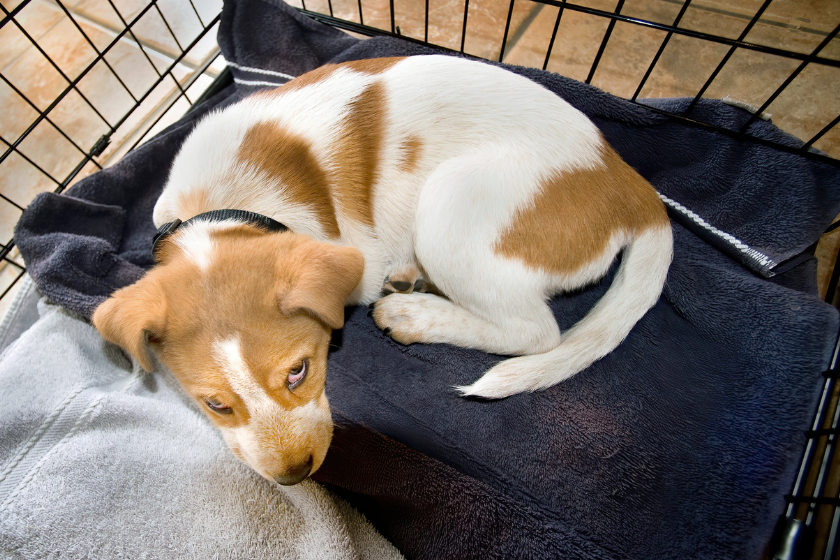
RELATED: Frisco Extra Large Dog Training & Potty Pads
Puppies should not go outside apart from a confined area until they are fully vaccinated. A puppy is considered fully immunized against the core diseases of adenovirus (hepatitis), distemper, and parvovirus when he has received a vaccination for these diseases after the age of 16 to 18 weeks.
So using indoor potty pads for those first few months takes patience, but it works for many puppy parents. Here are the steps:
1. Put down potty pads or pretreated puppy pads (these pads have a scent on them that helps with urination) and encourage your puppy to use these areas for going to the bathroom.
2. Whenever you see him starting into their pre-potty pattern (walking around in circles), pick them up, carry him over to their potty spot, and give them lots of praise.
3. After he is using the papers consistently, they can be moved closer to the door and then ultimately outside. The transition is made from concentrating the toilet habits from one spot inside the home to one spot outside the home.
Some pet parents swear that crate training is the way to go! Make sure the crate isn't too large but just big enough to fit their sleeping blanket. Some crates come with dividers so that you can cut down the size of a larger crate. Many dog owners swear by crate training for multiple reasons, but some feel that it is a cruel practice. However, dogs are den animals, and a crate makes them feel safe and secure. Also, dogs don't like to make a mess in their crate since that is their den. You wouldn't want to sleep in your feces, either.
Here are some crate training tips to follow:
1. Whenever the puppy is home, but you cannot tend to him, he is placed in the crate.
2. When you're cooking, on your iPad, or even away from home, you should potty your puppy outside in their fave spot and put the puppy in the crate.
3. The first thing you do when you take the animal out of the crate is another trip outside.
4. No food or water goes in the crate, just a blanket. Overnight is just for sleeping, so keep it simple then too. (You shouldn't be leaving them in their crate for long periods of time anyway, so it's ok not to leave water or chew toys in there).
Our pup goes to most places with us and goes potty outside before we go on car rides, and goes outside again when we get home. It could be just a quick 20-minute ride, and we still take him out. When we go somewhere, we cannot take our puppy with us we walk him so he can go potty and place him in his crate. It helps to tell him "goodbye" and "we will be right back."
Use A Bell
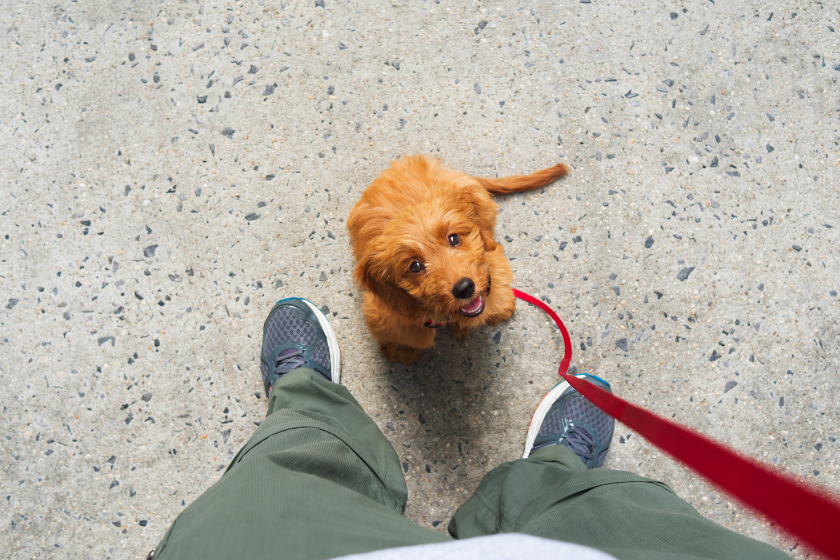
To train your puppy to maintain good habits, frequent bathroom breaks are key. Bell training uses a dog doorbell. However, the bell is only supposed to be used when your dog needs a potty break.
1. Teach your dog how to press the doorbell. You can ring it yourself the first few times, but make sure your dog gets familiar with the doorbell. They will soon learn to use their nose or paw to ring the bell.
2. Once your puppy successfully rings the bell, it's time to go outside. Positive reinforcement and treats are helpful while learning to press the doorbell on their own.
3. Every time your dog is ready for a break, remind them to ring the bell.
Eventually, they will learn that they must ring the bell before you open the door to go outside. Baby gates are always a great way to keep him confined, or a six-foot leash attached to you will ensure your puppy isn't wandering around your home if they cannot be monitored. Enzymatic cleaners are great for accidents as this type of cleaner will avoid future accidents in the same spot.
Remember that you must take the time to train your dog! Young puppies don't know any better! They still have so much to learn, and it can take some time. However, after a couple of months, if you are having problems, you can always reach out to a professional dog trainer. They can give you additional tools to train your pup successfully.
Potty Training Essentials
1. AmazonBasics Dog and Puppy Training Pads
Many people like to use an extra bathroom as the designated potty area. Housebreaking a new puppy can be tough! You'll want to keep the urine smell hidden and pick up the soiled pads as quickly as possible.
2. Rocco & Roxie Professional Strength Stain & Odor Eliminator
If your new dog happens to miss the puppy pad, no biggie! Enzyme cleaner is a miracle worker and leaves your carpet smelling fresh.
3. Luckyiren Upgraded Puppy Bells Dog Doorbells for Door Knob
It may take a little extra work on the front end of training, but once you and your puppy get used to the bell, it may be a useful tool for potty training. We have a training bell for our pup, and it takes a little getting used to, but it works!
Have you tried housebreaking a puppy? Let us know everything you learned in the comments!
This post was originally published on March 24, 2018.
